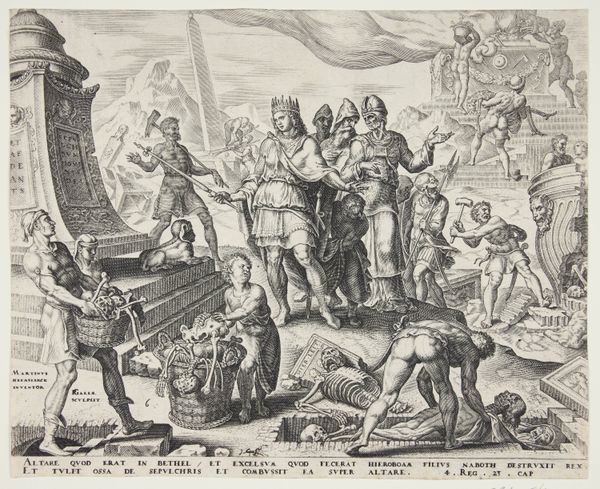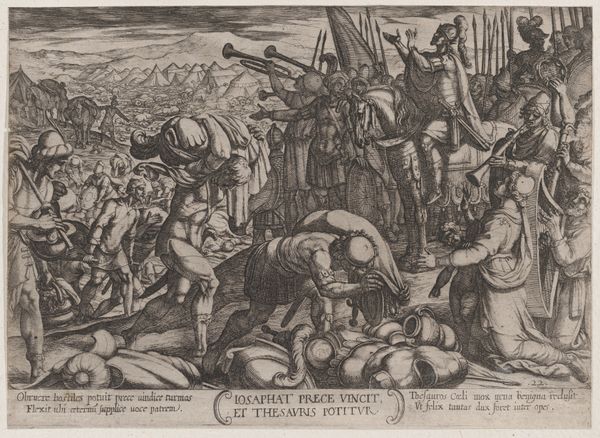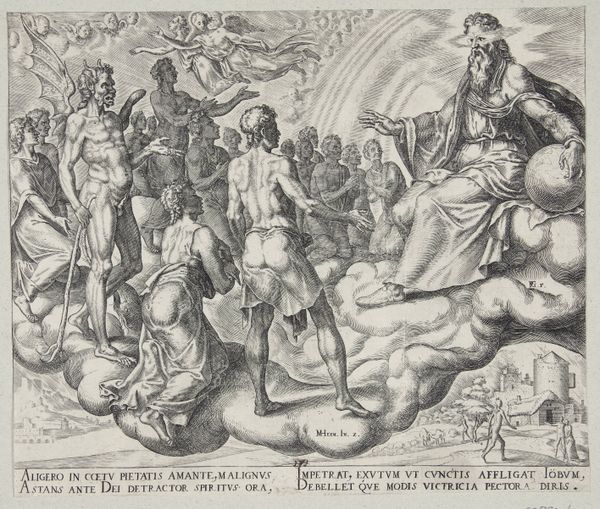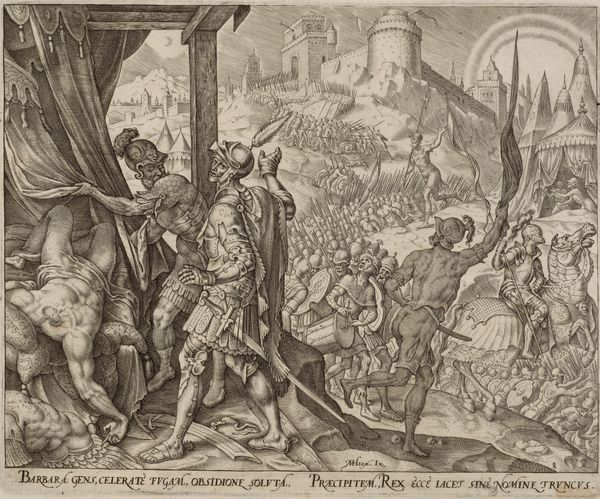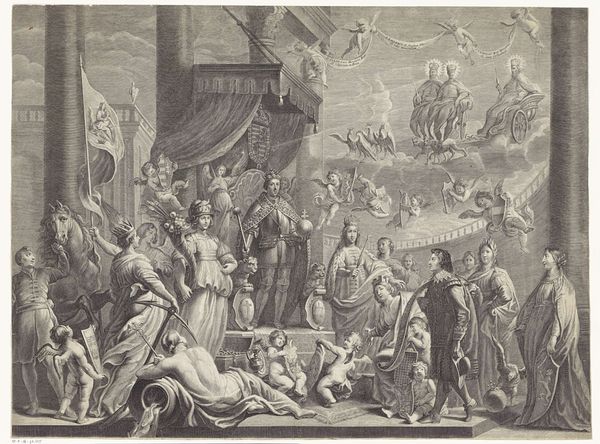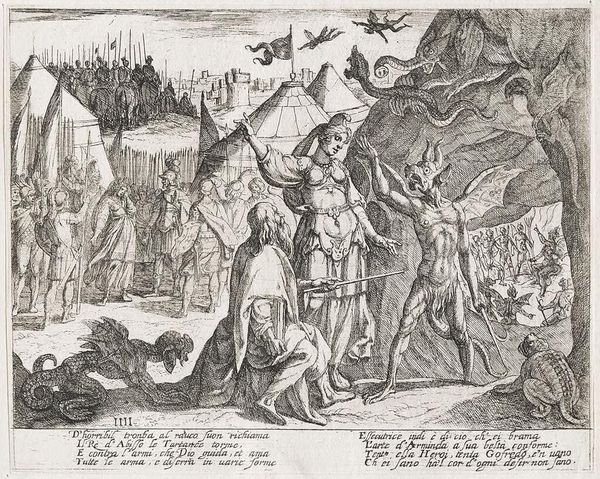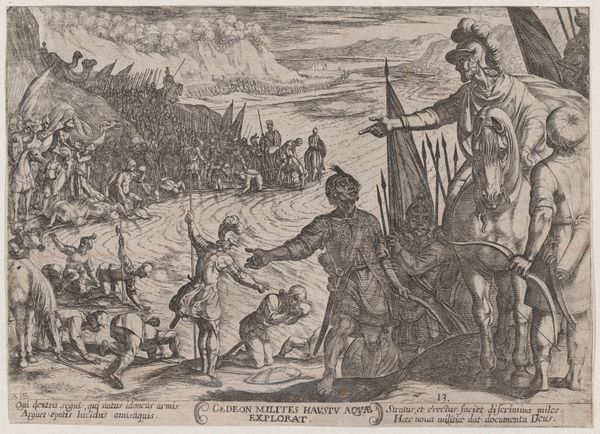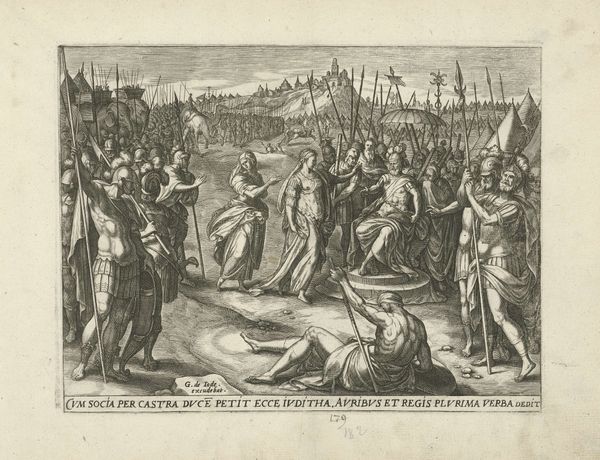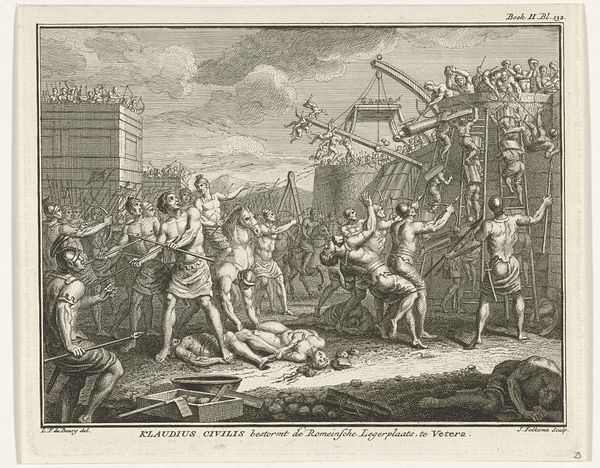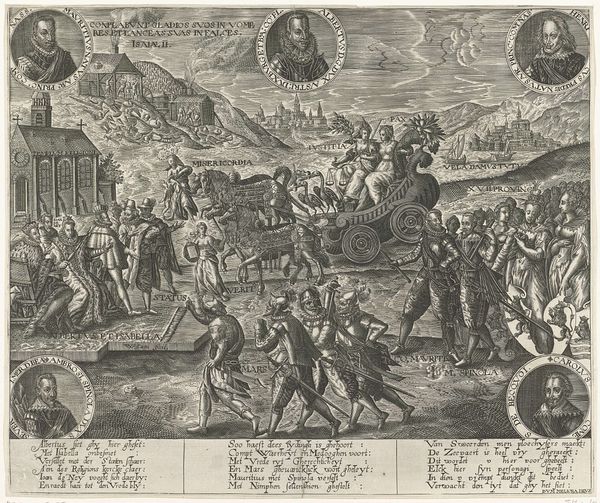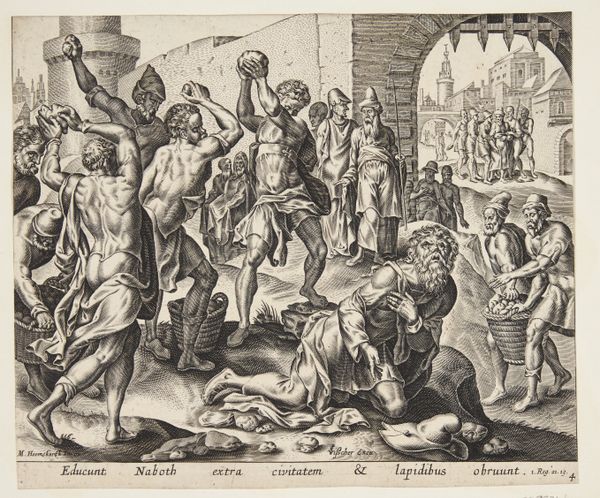
print, engraving
#
allegory
# print
#
pen illustration
#
pen sketch
#
mannerism
#
figuration
#
form
#
line
#
history-painting
#
northern-renaissance
#
engraving
Dimensions: height 202 mm, width 250 mm
Copyright: Rijks Museum: Open Domain
Philips Galle’s engraving depicts King Josiah desecrating an altar in Bethel. We see men tearing down monuments and exhuming skeletons from their graves. Observe the act of destruction—a violent rejection of the past. This motif, potent across cultures, echoes in pagan iconoclasm where idols are toppled, embodying a shift in belief. Here, it recalls images of the Reformation, as the destruction of idols symbolizes a purification of faith, mirroring humanity’s eternal struggle with devotion and doubt. Consider the presence of bones and skulls. These aren’t mere anatomical studies but memento mori, reminders of mortality that transcend time. From ancient Roman triumphs, where a slave whispered “remember you are mortal,” to vanitas paintings, these symbols are visual cues of life's ephemerality. Such persistent imagery taps into our collective consciousness, stirring subconscious fears and compelling a deep contemplation on life and legacy. The cyclical dance between creation and destruction is eternally intertwined, resonating through ages.
Comments
No comments
Be the first to comment and join the conversation on the ultimate creative platform.
